Takikomi Gohan is a wonderful and comforting Japanese mixed rice recipe made with seasonal ingredients. It‘s a savory bowl of flavorful rice that‘s perfect to serve with simple meals. This recipe is also gluten-free!

One of the easiest ways to include more vegetables in your diet is to add vegetables to your rice. When your main course is a simple dish such as grilled fish, Japanese Mixed Rice or Takikomi Gohan (炊き込みご飯) brings up more flavors and varieties to the meal.
Table of Contents
What is Takikomi Gohan?
Takikomi Gohan is a Japanese rice dish in which we cook short-grain rice with vegetables, mushrooms, seafood, or meat. We usually season it with Japanese stock (dashi) and soy sauce.
Depending on where you are/live in Japan, this dish might be called Kayaku Gohan (かやくご飯) or Gomoku Gohan (五目ご飯), 5-ingredient mixed rice, which is loosely translated because there are roughly five ingredients.
There is also a very similar dish called Maze Gohan (混ぜご飯). Unlike Takikomi Gohan where we cook the uncooked rice and other ingredients in the same pot, Maze Gohan is cooked rice mixed with cooked and seasoned ingredients.
Do any of these names sound familiar to you?
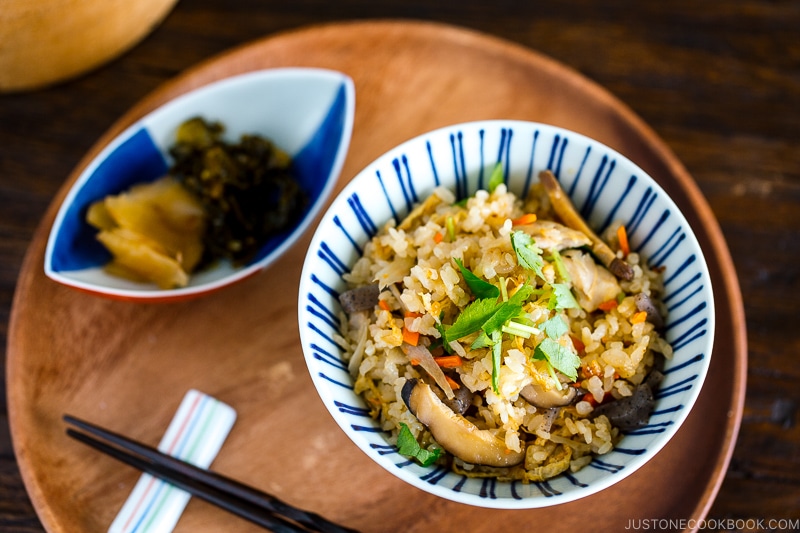
Takikomi Gohan Ingredients
What are good ingredients to put in your Takikomi Gohan recipe? Let’s start with the most basic one, which is today’s recipe.
Basic Ingredients
You can make a simple Takikomi Gohan with white rice, carrots, burdock root (gobo), konnyaku (a wobbly jello-like slab made of taro/yam), deep-fried tofu pouch (aburaage), and shiitake mushrooms. These are the most common ingredients that you expect to see in Takikomi Gohan.
If you use kombu dashi, this dish is vegetarian and vegan.
Some variations include chicken thigh or breast adding more flavors to the dish, and I’ve made today’s recipe with chicken thigh.
Popular Takikomi Gohan Ingredients
Besides the basic ingredients I mentioned above, these are other popular and seasonal ingredients used in Takikomi Gohan.
- Bamboo shoots – spring
- Beef (thinly sliced or scraps)
- Canned tuna
- Chestnuts (recipe) – fall
- Clams or Asari (あさり)
- Hijiki seaweed
- Matsutake Mushrooms (recipe) – fall
- Mushrooms – king oyster, maitake, shimeji, etc
- Pacific saury or Sanma (秋刀魚) – fall
- Peas
- Sweet potatoes
Japanese enjoy making different Takikomi Gohan depending on the season, and I’ll be sharing them on my blog in the future.
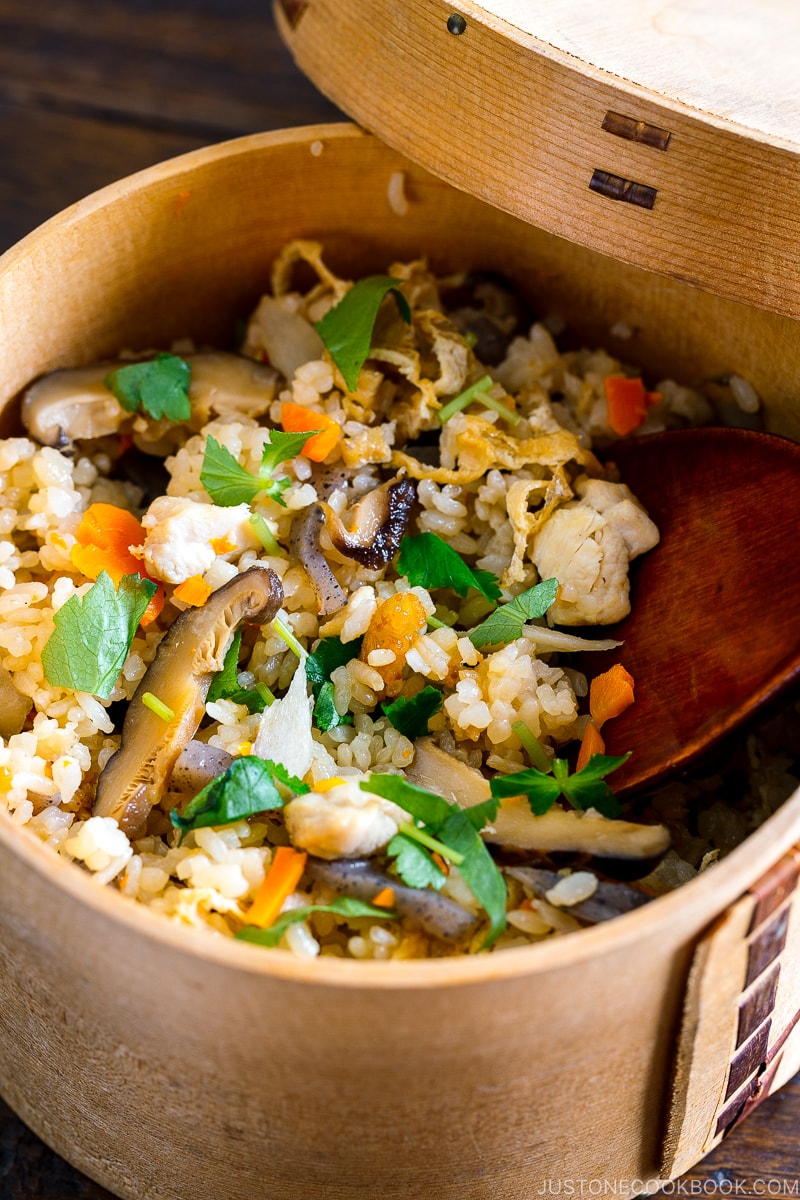
3 Tips to Make the Best Takikomi Gohan
Here are some important tips and techniques to remember when you make Takikomi Gohan.
1. Keep portion in control
I tend to add too many ingredients when I make this dish and it doesn’t feel like a rice dish anymore. So, keep in mind that the ingredients should be roughly 20-30% of cooked rice when it’s done cooking (eyeball this, it doesn’t have to be perfect). If you put too many of these ingredients, they will absorb all the liquid in the rice cooker and the rice will not cook properly.
2. Soak rice in water
It’s very important to soak rice after washing it. It will help the rice to absorb the flavors from the ingredients and seasonings. It will also help the rice become fluffier and tender.
After proper soaking, make sure to drain the water for at least 15 minutes. This is very important so that when you add to the rice cooker bowl, you won’t incidentally add any extra water that’s not called for in the recipe that could dilute the seasonings. Also, be sure not to drain too long because the rice will crack when it gets too dry.
You might think soaking the rice in the seasoning adds more flavor to the rice. But that’s not true. Soy sauce and other seasonings prevent the rice from absorbing water. Plus, the seasoning will separate into layers if you leave it too long. Therefore, it’s best to start cooking immediately after you add the seasonings and toppings.
3. Do not mix rice and other ingredients before Cooking
Make sure to mix the rice and ingredients together only after the rice is cooked. The rice gets cooked properly (due to the circulation of heat and water) when it’s cooked at the bottom of the rice cooker bowl (or even pot).
When you are adding ingredients on top of the rice, place hard ingredients like root vegetables first, then gradually to softer ingredients on top.
Immediately after Takikomi Gohan is done cooking, fluff up the rice with a rice paddle as if you are cutting the rice and then scoop over to gently mix the rice and ingredients all together.
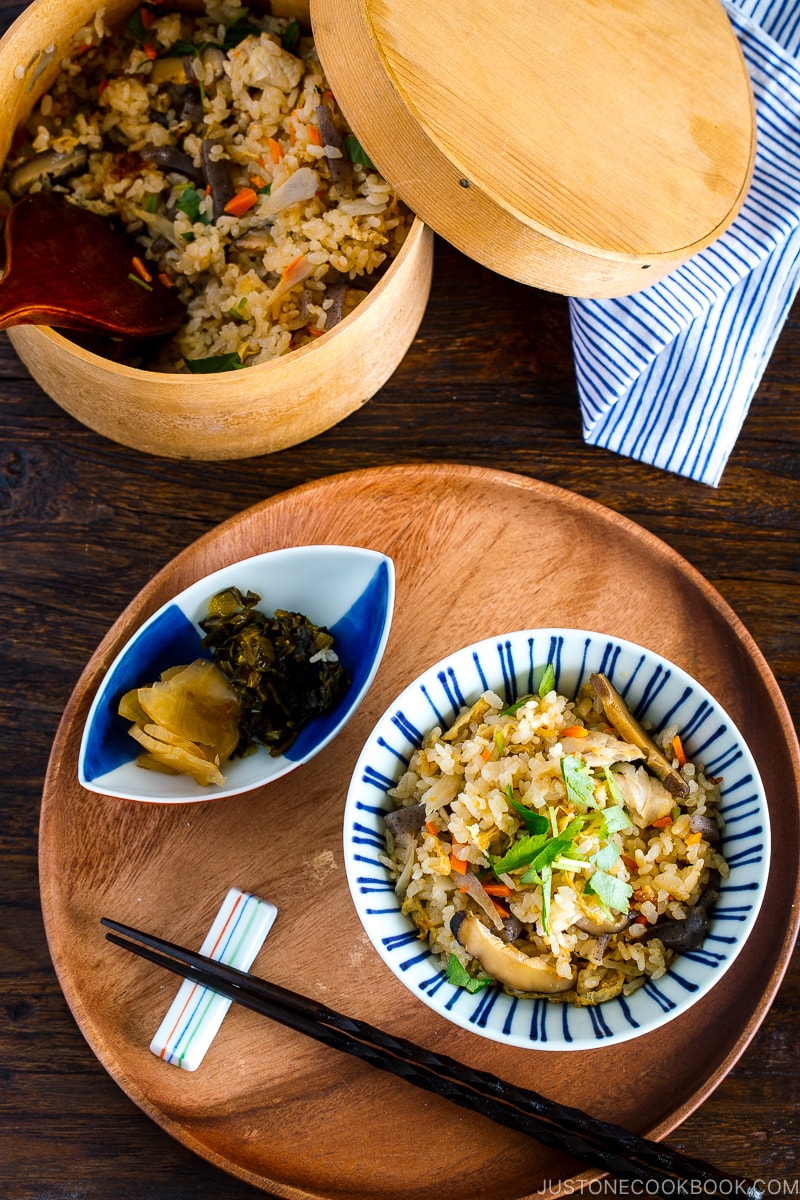
Takikomi Gohan vs. Maze Gohan
Remember, Takikomi Gohan is the rice COOKED WITH ingredients. Maze Gohan is the cooked rice MIXED with cooked ingredients. Some of you might wonder which method is better, and here are my thoughts.
When you cook together, the rice absorbs more flavors from the ingredients. However, it also means that the ingredients are cooking for the same amount of time as the rice, so the ingredients can become harder and tougher.
Therefore, if you use ingredients that you want to keep tender and don’t want to lose the texture, I recommend cooking it separately and mix it with rice later. Scallops are a good example: they don’t need to be cooked for a long time. If you cook with rice, the scallops will overcook and become dry.
On the other hand, if the ingredients are dry (like hijiki seaweed and dried shiitake mushrooms) and it takes time for them to release the flavors, cook it together with rice. Also if the ingredients you use are flavorful, cook together with rice.
Do you have an Instant Pot (Pressure Cooker)?
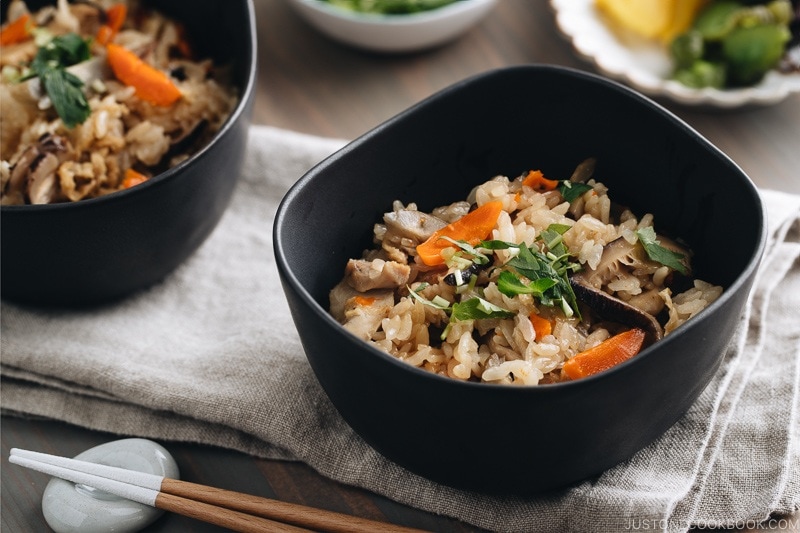
No rice cooker? You can make Takikomi Gohan in your Instant Pot too! Check out the detailed recipe here: Instant Pot (Pressure Cooker) Takikomi Gohan.
Use Gluten-Free Soy Sauce for GF Takikomi Gohan
This Takikomi Gohan recipe can be easily converted to a gluten-free dish if you use gluten-free soy sauce.
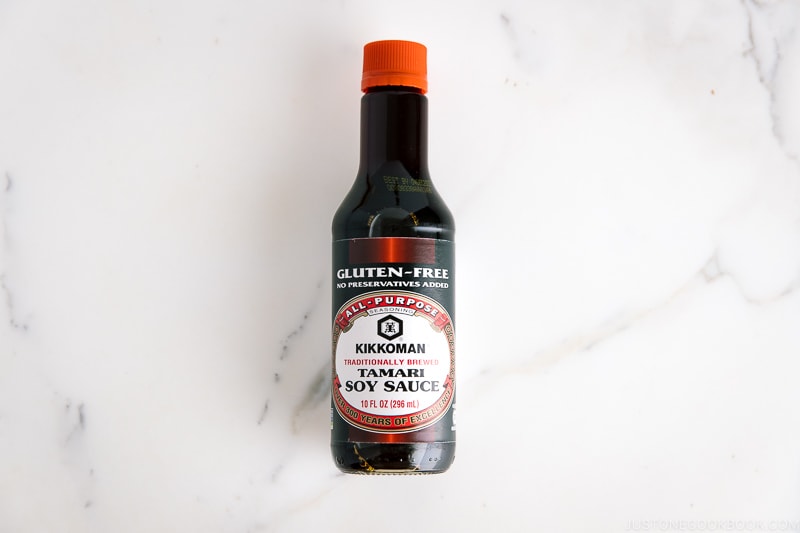
Kikkoman offers this gluten-free tamari soy sauce. If you want to know more about this product, please click here.
If you’re gluten intolerant, check out my Gluten-Free Recipes for additional recipe ideas.
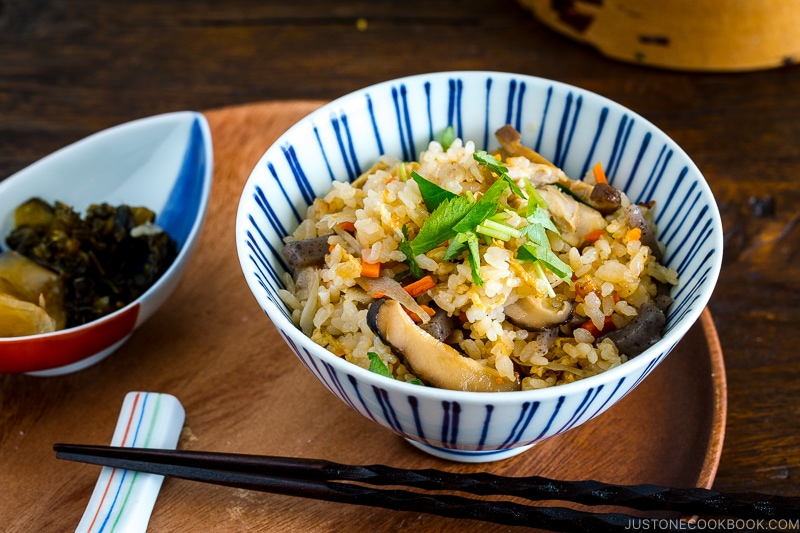
Wish to learn more about Japanese cooking? Sign up for our free newsletter to receive cooking tips & recipe updates! And stay in touch with me on Facebook, Pinterest, YouTube, and Instagram.
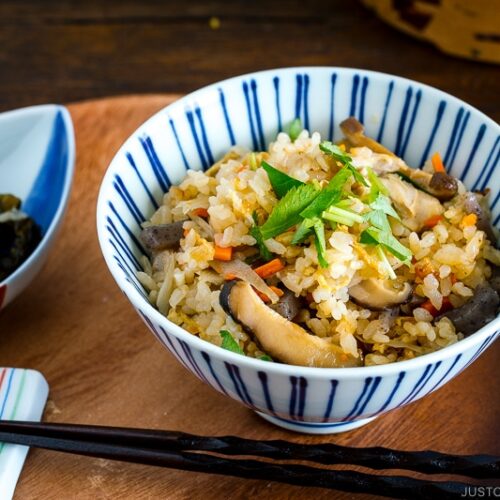
Takikomi Gohan (Japanese Mixed Rice)
Video
Ingredients
- 1½ cups uncooked Japanese short-grain white rice (or 2 rice cooker cups)
- 3 dried shiitake mushrooms (0.5 oz, 15 g)
- ½ cup water (for soaking the shiitake and making shiitake dashi)
- ⅓ package konnyaku (konjac) (3 oz, 85 g)
- 1 piece aburaage (deep-fried tofu pouch) (¾ oz, 20 g)
- 1 oz gobo (burdock root) (4 inches, 10 cm)
- 2 oz carrot (3 inches, 7.5 cm)
- 1 boneless, skinless chicken thigh (4.8 oz, 135 g)
- 1½ cups dashi (Japanese soup stock) (use the shiitake dashi you made from soaking the mushrooms plus standard Awase Dashi, dashi packet or powder, or Vegan Dashi)
- 1½ Tbsp mirin
- 1½ Tbsp soy sauce
For the Garnish
- mitsuba (Japanese parsley) (or substitute green onion/scallion)
Instructions
- Prepare all the ingredients. For the Japanese short-grain rice, 1½ US cups or 2 rice cooker cups (360 ml, 300 g) of uncooked rice yields roughly 4 servings (3½ US cups, 660 g) of cooked rice.

To Prepare the Ingredients
- Wash 1½ cups uncooked Japanese short-grain white rice in a large bowl. Rice absorbs water very quickly when you start washing, so don‘t let the rice absorb the opaque water. Gently wash the rice in a circular motion, add water, and discard it. Repeat this process about 3–4 times.

- Let the rice soak in water for 20–30 minutes. Then, transfer the rice into a sieve and drain completely for at least 15 minutes. Tip: It's important to soak the short-grain rice. Why not soaking in the seasoning? Soy sauce and other seasonings actually prevent the rice from absorbing water.

- Soak 3 dried shiitake mushrooms in ½ cup water for 15 minutes. I place a smaller bowl on top to keep the mushrooms submerged in the water at all times.

- In a small saucepan, bring 2 inches (5 cm) of water to a boil. Place ⅓ package konnyaku (konjac) in the boiling water and cook for 1 minute to get rid of any odor. Transfer the konnyaku to a plate to cool. Add 1 piece aburaage (deep-fried tofu pouch) to the same pot of boiling water and cook for 1 minute. This removes the excess oil from the aburaage. Transfer the aburaage to a plate to cool. Discard the water.

- Scrape the skin of 1 oz gobo (burdock root) with the back of your knife. The earthy flavor and aroma of the gobo is right underneath the skin; therefore, you only need to scrape off the outer skin. Do not use a peeler. Then, make a cross incision at the thick end of the gobo about 1 inch (2.5 cm) deep. This helps make shaving the gobo easier.

- Shave the gobo from that end while constantly rotating the root with the other hand, as if you were sharpening a pencil with a knife. Soak the shaved gobo in a bowl of water to prevent discoloration.

- Cut 2 oz carrot in half lengthwise and cut diagonally into thin slices. Then, cut the slices into julienned or smaller pieces.

- Cut the aburaage and konnyaku into thin small strips.

- Cut 1 boneless, skinless chicken thigh into ¾-inch (2-cm) slanted pieces. Hold your knife at 45-degree angle and slice the chicken. This sogigiri cutting technique gives the chicken more surface area so it will cook faster and soak up flavors quickly.

- Squeeze the liquid from the rehydrated shiitake mushrooms and save the soaking liquid (this is called Shiitake Dashi). Remove the stems and cut the caps into thin slices.

- Strain the shiitake dashi into a bowl through a fine-mesh strainer to get rid of any dirty particles. In a measuring cup, add all the shiitake dashi plus enough additional dashi to make 1½ cups dashi (Japanese soup stock).

To Cook the Takikomi Gohan
- Now your ingredients are ready to cook.

- Place the drained rice in the rice cooker. Add 1½ Tbsp mirin and 1½ Tbsp soy sauce to the rice in the rice cooker pot.

- Pour the dashi and shiitake dashi mixture into the rice and mix well. Level the rice with your fingers or chopsticks.

- Next, place the chicken pieces evenly on top of the rice. Do NOT mix the chicken or other ingredients into the rice. (Tip: The rice won‘t cook properly if you mix in the ingredients at this stage. It won‘t absorb enough water and will end up with a hard texture.) Continue scattering the rest of the ingredients on top of the rice, starting with the hard ingredients and ending with the softer ingredients. Without mixing it all up, close the rice cooker lid. Tip: The seasoning will separate into layers if you leave it too long; therefore, it's best to start cooking immediately after you add the seasonings and toppings.

- Start cooking the rice. Use the Mixed Rice setting if your rice cooker has that option (see Notes below). Once the rice is done cooking, use a rice paddle to stir the rice and vegetables with a light slicing and tossing motion to distribute the ingredients evenly into the rice. The rice at the bottom of the pot gets slightly caramelized; this is called okoge and it‘s especially tasty.

To Serve
- Serve the rice hot or at room temperature. Sprinkle chopped mitsuba or green onion on top.

To Store
- You can keep the leftover rice in the freezer for up to a month. I don‘t recommend storing it in the refrigerator as the rice gets too dry and hard.
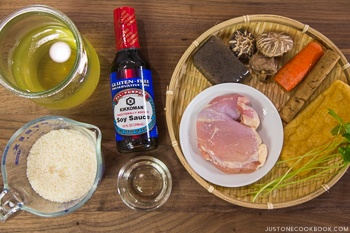
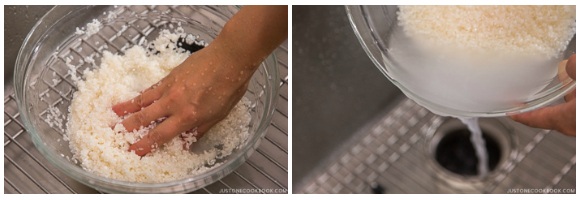
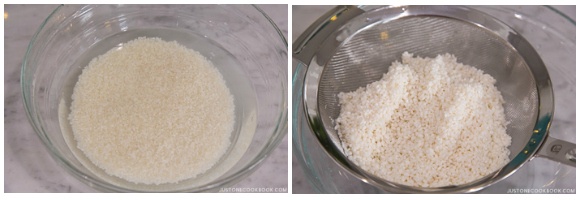
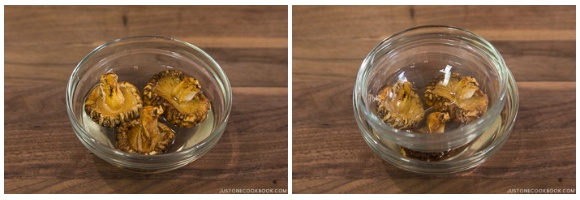


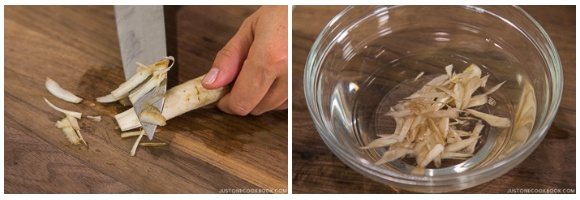

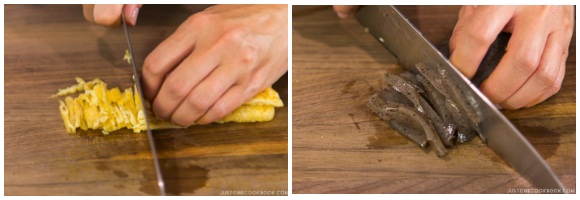
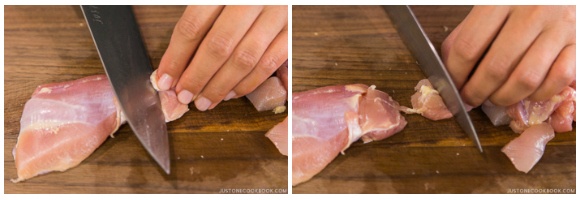
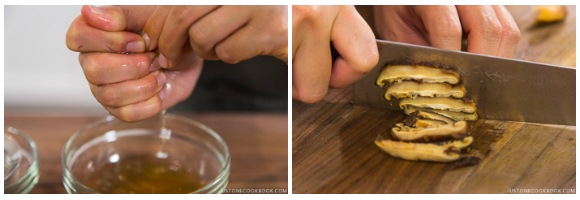

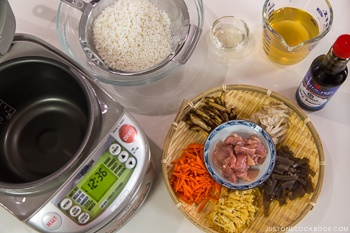
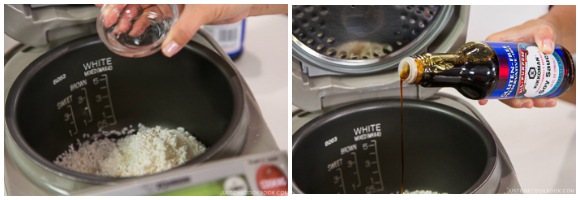
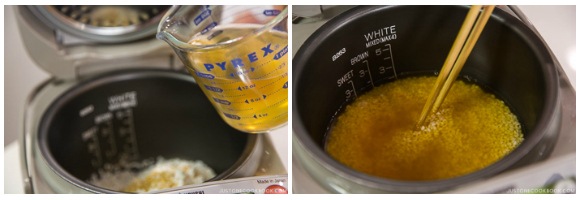

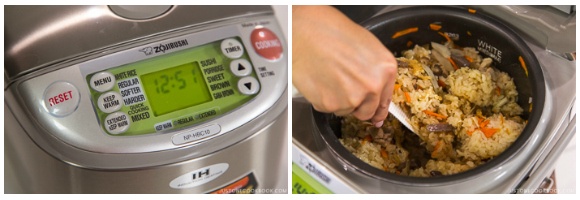
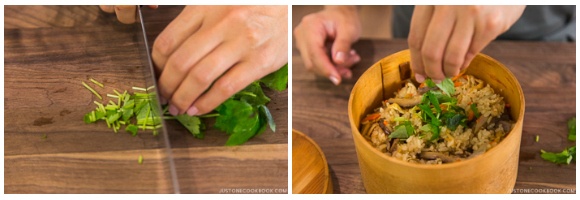










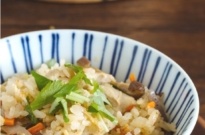
Hello, Which brand of rice cooker has the “Mixed Rice Setting”? My grandmother used to love the okoge. She made the rice from a “rice pot.” Thank you!
Hi, hys! Thank you for reading Nami’s post!
Zojirushi has the setting and makes nice Okoge! Nami introduced her favorite rice cooker in this post:
https://www.justonecookbook.com/how-to-make-rice/
We hope this helps!
I just made it.
It’s very nice taste, the veggies taste perfect but the rice it’s a bit on the sweet side though…
Next time I might increase the soy sauce or add some salt.
Hi Ildi! Thank you for trying Nami’s recipe!
The sweetness could be from the carrot. Yes! Please add bit of more soy sauce or salt to your taste next time!
Happy Cooking!
I don’t have a rice cooker. What adjustments should I make to cook this recipe on the stovetop?
Hello, awu! You can follow this recipe, use a standard Donabe or heavy-bottomed pot, and cook for about 13–15 minutes on medium-high heat. Then turn off the heat, remove it from the heat, and leave the cover on for 10 minutes to allow the rice to steam.
We hope you enjoy Takikomi Gohan. Thank you for trying Nami’s recipe!
Made this in my donabe rice cooker. Was lovely.
Hi Fiona! We are glad to hear that you enjoyed Takikomi Gohan!
Thank you so much for reading Nami’s post and trying her recipe. 😊
Hi Nami — I’ve made your Takikomi Gohan twice, both good. The second time was better, probably because I soaked the rice for 30 minutes and found gobo, but both tasted a little flat, like it needed salt. Is it OK to add salt or is that my palate? Thank you for a wonderful, de-mystifying website.
Hi Land, Thank you so much for trying Nami’s recipe!
You can add salt if you prefer a saltier flavor. You can also use soy sauce instead. But first, we recommend adding one more dried shiitake mushroom to make a stronger Dashi.
We hope this helps!
Could this be made in a small, one-setting rice cooker? For example, a small (6-cup) Zojuriushi that only has an on-off switch?
Hi Ross, Thank you for reading Nami’s post and trying her recipe.
We haven’t tried that rice cooker and aren’t sure what the results will be, but we’ve heard that when you add extra ingredients, it doesn’t always cook all the way through.
This recipe can also be cooked on the stovetop using Donabe or a heavy-bottomed pot over medium-high heat.
You can use this recipe as a guide.
https://www.justonecookbook.com/japanese-mushroom-rice/
We hope this helps!
Hi Nami san, how long does it take to cook takikomi gohan in a Donabe?
Hi Robyn! Thank you so much for trying Nami’s recipe!
It takes about 13–15 minutes to cook in the Donabe. Please see this Donabe recipe for cooking instructions: https://www.justonecookbook.com/tai-meshi-with-leftover-baked-sea-bream/
We hope this was helpful!
I made it – And it was outstanding. The flavors !!!!! but now I have quiet a bit left over. What else can I do with it ? Any idea’s ? ( I made the matsutake version because they grow in the forest around here.)
Hi Surati! Thank you for trying Nami’s recipe and for your kind feedback!
Matsutake Takikomi Gohan sounds so delicious!
Takikomi Gohan can be used to make rice balls, or keep the leftover rice in the freezer for up to a month.
https://www.justonecookbook.com/onigiri-rice-balls/
We hope this helps!